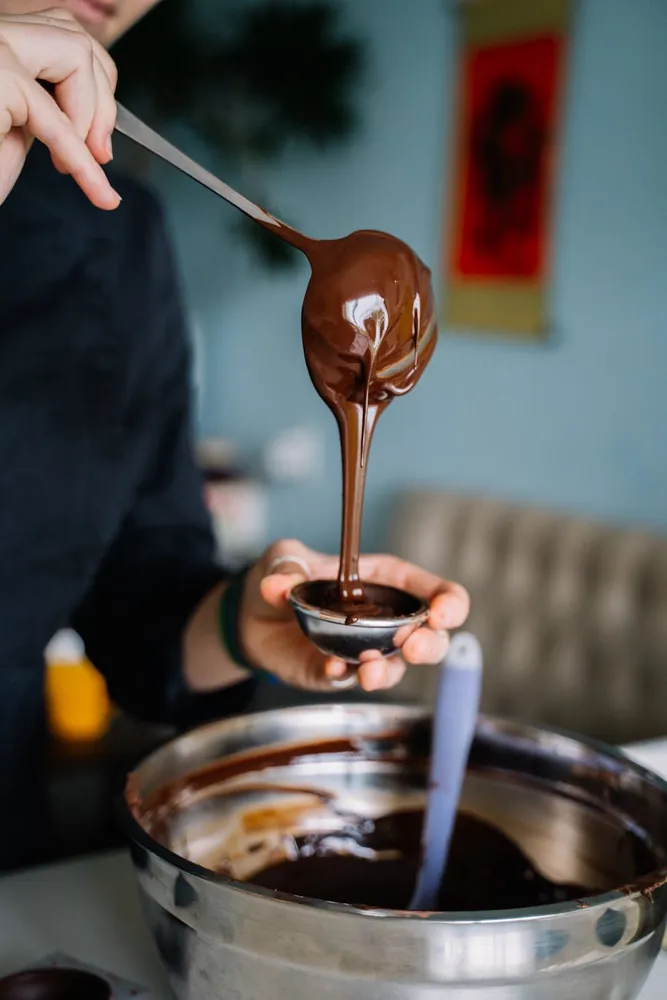Crafting Luxurious Chocolates: A Deep Dive into Artisan Techniques

The Art of Chocolate Making: A Luxurious Journey
In a world where chocolate is often seen as a common confection, a select group of artisans elevate this simple indulgence into a luxury experience. These master chocolatiers are not just making candy; they are crafting edible art, emphasizing both quality and sustainability in every bite. This article explores the meticulous techniques and unique ingredients that define luxurious chocolates, offering insight into the passion driving these creators.

Selecting Unique Ingredients
The journey to creating luxurious chocolate begins with the selection of unique and rare ingredients. Unlike mass-produced chocolate, which often relies on generic cacao sources, artisan chocolatiers scour the globe for the finest beans. For instance, the Criollo bean, known for its complex flavor profile, is highly prized but difficult to source due to its susceptibility to disease. This rarity, however, makes it a sought-after choice for high-end chocolate creations.
Beyond cacao, other ingredients such as organic spices, rare botanicals, and unique infusions play a critical role. Consider the use of Tahitian vanilla, which differs from its Madagascar counterpart in both aroma and taste, imparting a distinct floral note that enhances the depth of chocolate flavors. Some chocolatiers even experiment with exotic fruits like yuzu or calamansi to introduce refreshing contrasts to the rich cacao undertones.
Case Study: A Peruvian Adventure
One chocolatier's commitment to unique ingredients took him on an expedition to Peru, where he worked with local farmers to cultivate rare varieties of cacao. This collaboration not only supported sustainable farming practices but also resulted in chocolate that carries the distinct terroir of its origin. Such partnerships are vital in creating chocolates that are both luxurious and ethically produced.
Mastering Artisan Techniques
Artisan chocolatiers employ traditional methods combined with modern innovation to refine their craft. One essential technique is conching, which involves heating and grinding chocolate to develop its flavor and texture. The conching process can last anywhere from hours to days, with longer durations producing smoother and more complex chocolates.
Another critical technique is tempering, which ensures a glossy finish and a crisp snap in finished chocolates. Tempering requires precise control of temperature to allow cocoa butter crystals to stabilize properly. Many artisans still perform this manually, using marble slabs—a testament to their dedication to quality and precision.
The Role of Small Batch Production
Luxurious chocolate is often synonymous with small-batch production. This approach allows artisans to maintain rigorous quality control and attention to detail. By focusing on smaller quantities, chocolatiers can experiment more freely with flavors and respond quickly to seasonal ingredient availability, keeping their creations fresh and innovative.
- Micro-roasting: Small batches allow for micro-roasting techniques that bring out specific flavor notes in cacao.
- Hand-painting: Some artisans hand-paint each piece, turning chocolates into miniature canvases that showcase visual artistry alongside taste.
Sustainability: A Pillar of Luxury
Sustainability is a cornerstone in the world of luxury chocolates. Artisans understand that true luxury involves respect for the planet and its people. This philosophy manifests in numerous ways, from ethically sourced ingredients to environmentally friendly packaging.
Many chocolatiers partner with fair-trade certified farms, ensuring farmers receive fair wages and work under humane conditions. Additionally, efforts such as biodegradable packaging or using renewable energy in production facilities reflect a commitment to minimizing environmental impact.
Embracing Local Communities
An excellent example is a small chocolate company in Belgium that works closely with local beekeepers to incorporate honey into their products. This not only supports local economies but also encourages biodiversity through sustainable farming practices.
A Luxurious Experience for All Senses
Luxe chocolates do not merely satisfy taste; they offer an experience that engages all senses. The journey begins with the packaging—often an artistic expression in itself—crafted from materials like silk-screened papers or custom-designed boxes that hint at the delicacies within.
Upon unboxing, the rich aroma of cacao immediately captivates the olfactory senses, setting the stage for the tactile pleasure of breaking a perfectly tempered piece. Finally, the taste—a symphony of flavors—unfolds slowly on the palate, often lingering long after the final bite.
The Future of Luxurious Chocolate
The future of luxurious chocolate is bright, driven by innovation and an increasing demand for sustainability and uniqueness. As consumers become more conscious of ethical consumption, the market for high-quality, responsibly-produced chocolate continues to grow.
Emerging trends such as personalized flavor profiles or blockchain traceability in sourcing could further elevate luxury chocolates, ensuring transparency and a bespoke experience for every consumer. In embracing these new possibilities, artisan chocolatiers remain committed to their core values of craftsmanship and sustainability.
Conclusion
The creation of luxurious chocolates is more than just a culinary endeavor; it is an intricate dance between tradition and innovation. Through meticulous attention to detail, commitment to sustainability, and passion for unique flavors, artisan chocolatiers craft confections that are truly extraordinary. As we savor each bite, we partake in a narrative rich with history, culture, and ethical integrity—a testament to the artisans' unwavering dedication to their craft.
 TrendLayer
TrendLayer